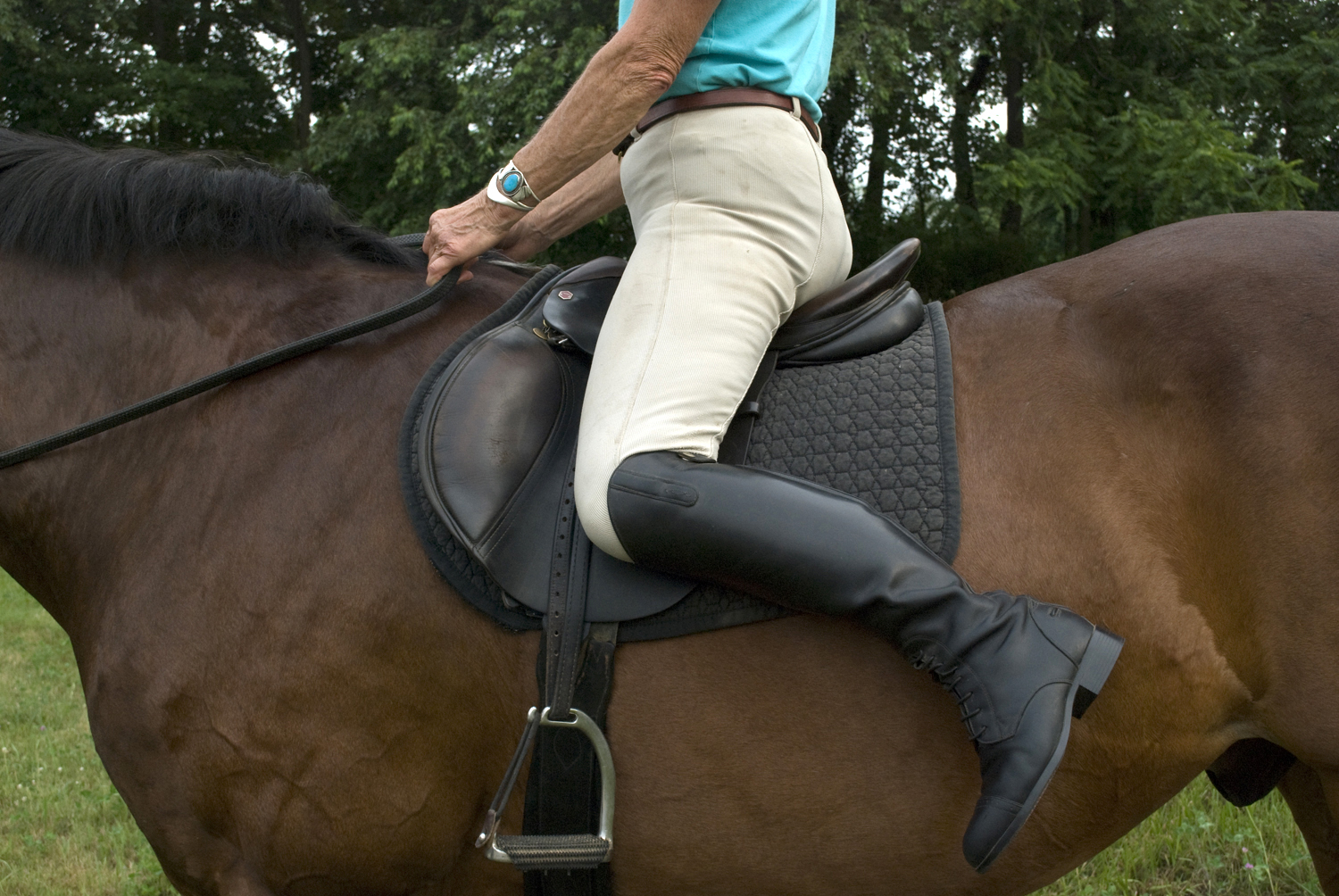
Photo courtesy of Trafalgar
Use this exercise from 40 5-Minute Jumping Fixes by biomechanics expert Wendy Murdoch to get your heels below the level of your stirrups. Lengthening the calf muscles allows them to sink back and down without forcing your foot against the stirrup.
When jumping, do you:
- Feel like your heels are not low enough?
- Brace against the stirrup to get them deeper?
- Harden your calf while attempting to get your heels down?
Riding with your heel below the level of your toes makes your overall position more secure. Heel depth varies slightly depending on the length of your stirrups and firmness of your leg aid, but you should always be able to return to this basic position.
Combined with the correct stirrup length, “heels down” results from flattening your back, lengthening at the front of your hip, allowing your knee to move forward and down, while lengthening the calf back and down into a flexible ankle joint. Softening the back of the knee maintains the angle so that the lower leg moves back and down under your seat. Allowing the calf to lengthen, combined with an elastic ankle, sinks your weight into your heel without force.
When the heel-down position is excessive, the rider’s leg position and stability are compromised: typically the lower back hollows, the front of the hip closes, and the knee straightens. The rider pushes the heel against the stirrup, which reacts like a pendulum, and swings forward.
The knee straightens and is unable to act like a shock absorber. The rider then pitches forward to keep her head over her feet—a natural and intelligent reaction, as staying upright or leaning back could cause her to fall backward. However, the swinging action of the stirrup can cause the rider to fall back into the saddle. Unfortunately, the end result puts the horse on the forehand with little to no change in heel depth relative to the ball of the foot.
Some instructors say the heel can never be too deep. I disagree with this. When the heel is too deep, the knee is too open, which results in a downward force on the horse’s back because the knee cannot move forward and down. This is stressful, especially on a weak-backed horse; it puts almost all of the rider’s weight on the stirrup bar and causes the horse to fatigue more quickly. “Bottoming out” the heel only focuses on one aspect of a good position and does not necessarily improve the overall function required to stay with the horse over fences without interference.

Photo courtesy of Trafalgar
EXERCISE
- On your horse, remove one foot from the stirrup.
- Bend your knee with your heel slightly away from the horse. Keep your seat bones in the saddle with your back flat.
- Press your heel toward the horse’s hind feet without shifting forward on your seat bones. Think of pressing from the hip the same way you might press your foot toward the ceiling when lying on your stomach. Press only a small amount. It is not necessary to move more than an inch or two. Feel how the front of the hip opens and the thigh lengthens down and back. The ankle remains unchanged. Rest for a moment by allowing your leg to hang.
- Bend your knee, and, if you can, watch your foot as you press backward, being careful not to move your pelvis. Pause.
- Press your heel down by flexing at the ankle and watch your heel as you change direction from back and down to forward and down. This direction will cause your stirrup to swing forward. To keep your leg under you while deepening your heel, the direction of the heel must be back and down while the knee remains bent.
- Replace your foot in the stirrup and think of lengthening your heel back and down from your hip. Feel how the calf lengthens so your heel sinks below the level of your toes. The lower leg remains under you because you did not change the direction of the heel or straighten the knee. This gives you an elastic ankle, which is able to flex as necessary to absorb a shortened stirrup and your horse’s motion over fences.
This excerpt from 40 5-Minute Jumping Fixes by Wendy Murdoch was reprinted with permission from Trafalgar Square Books (www.horseandriderbooks.com).
